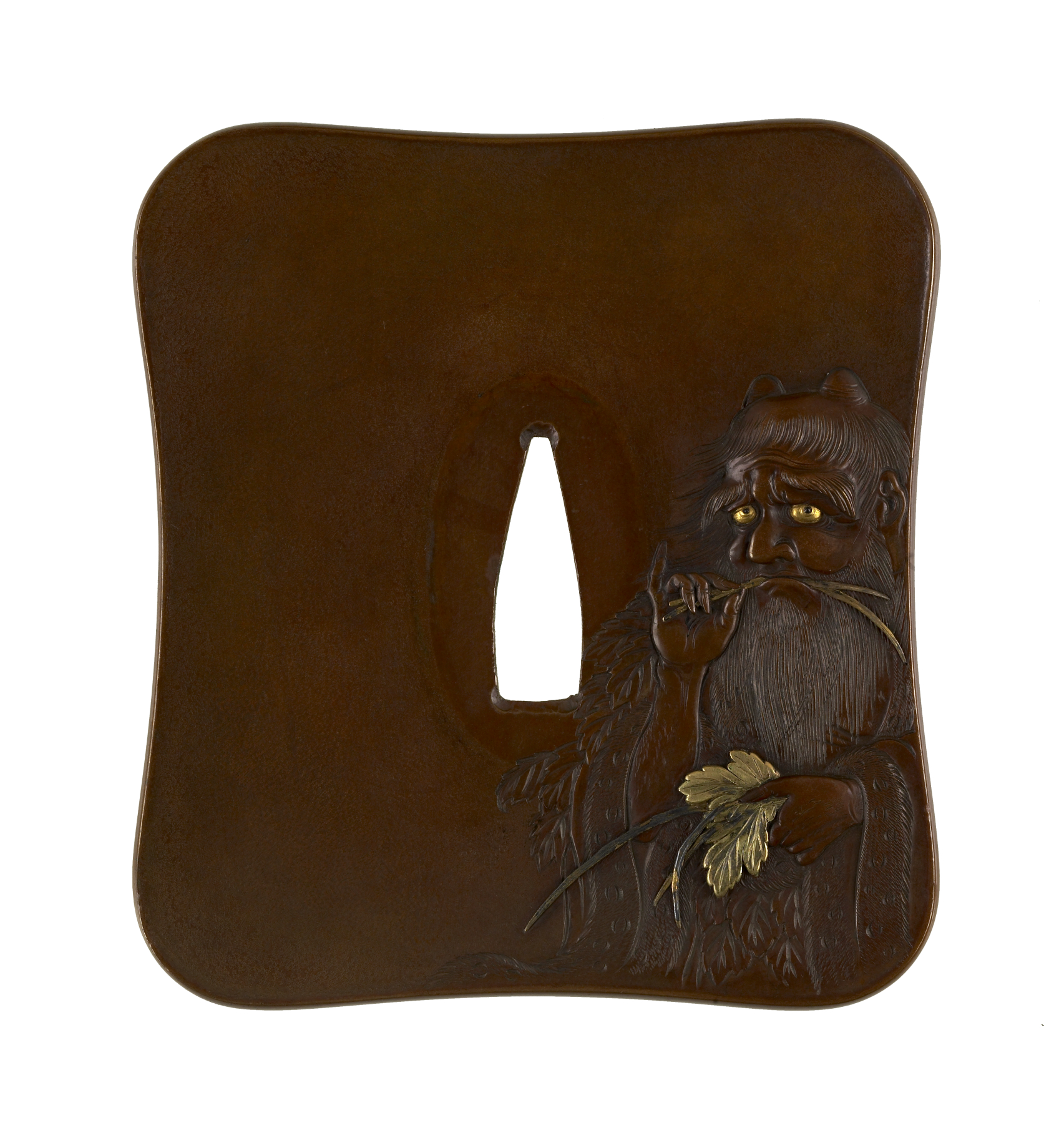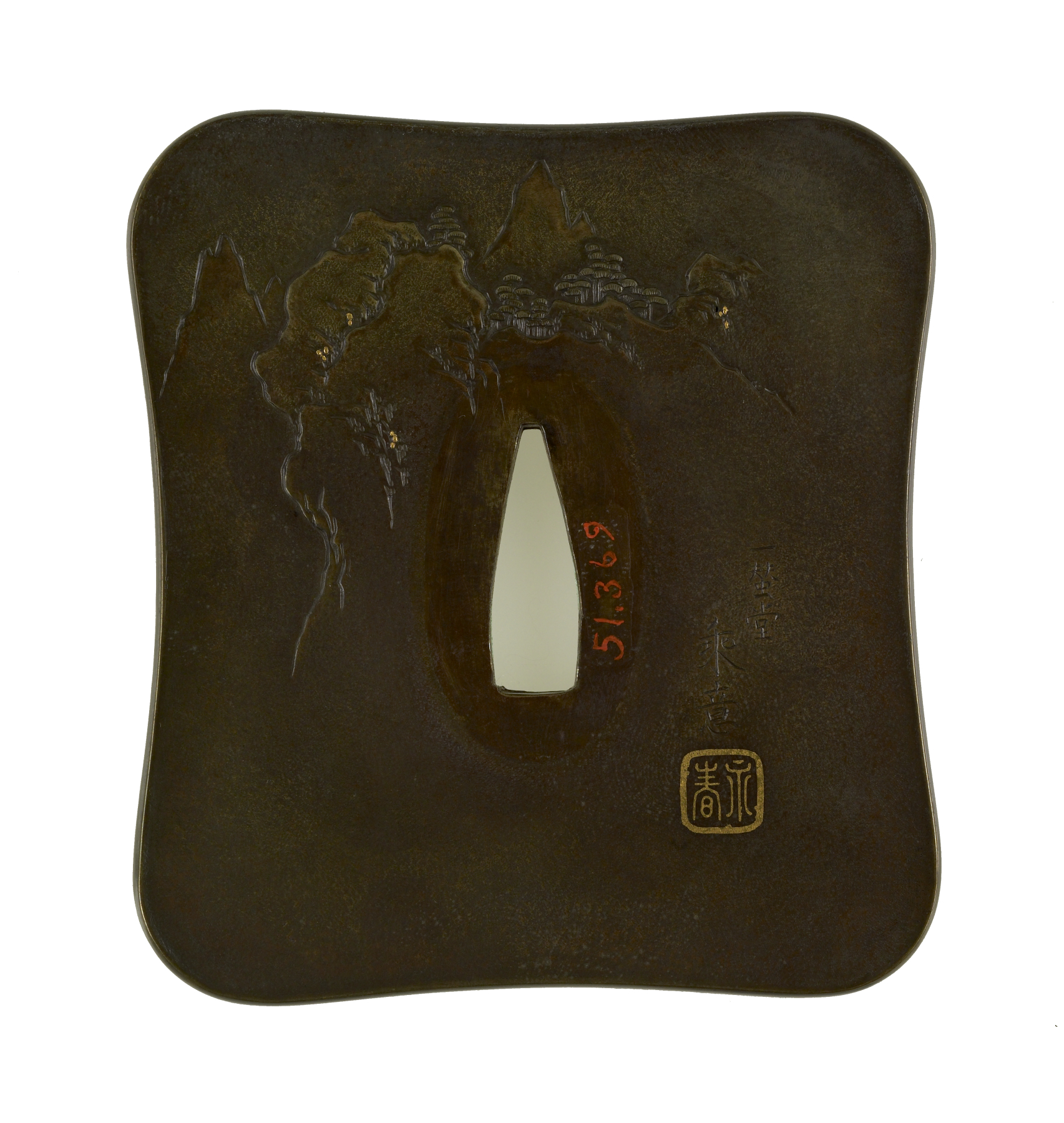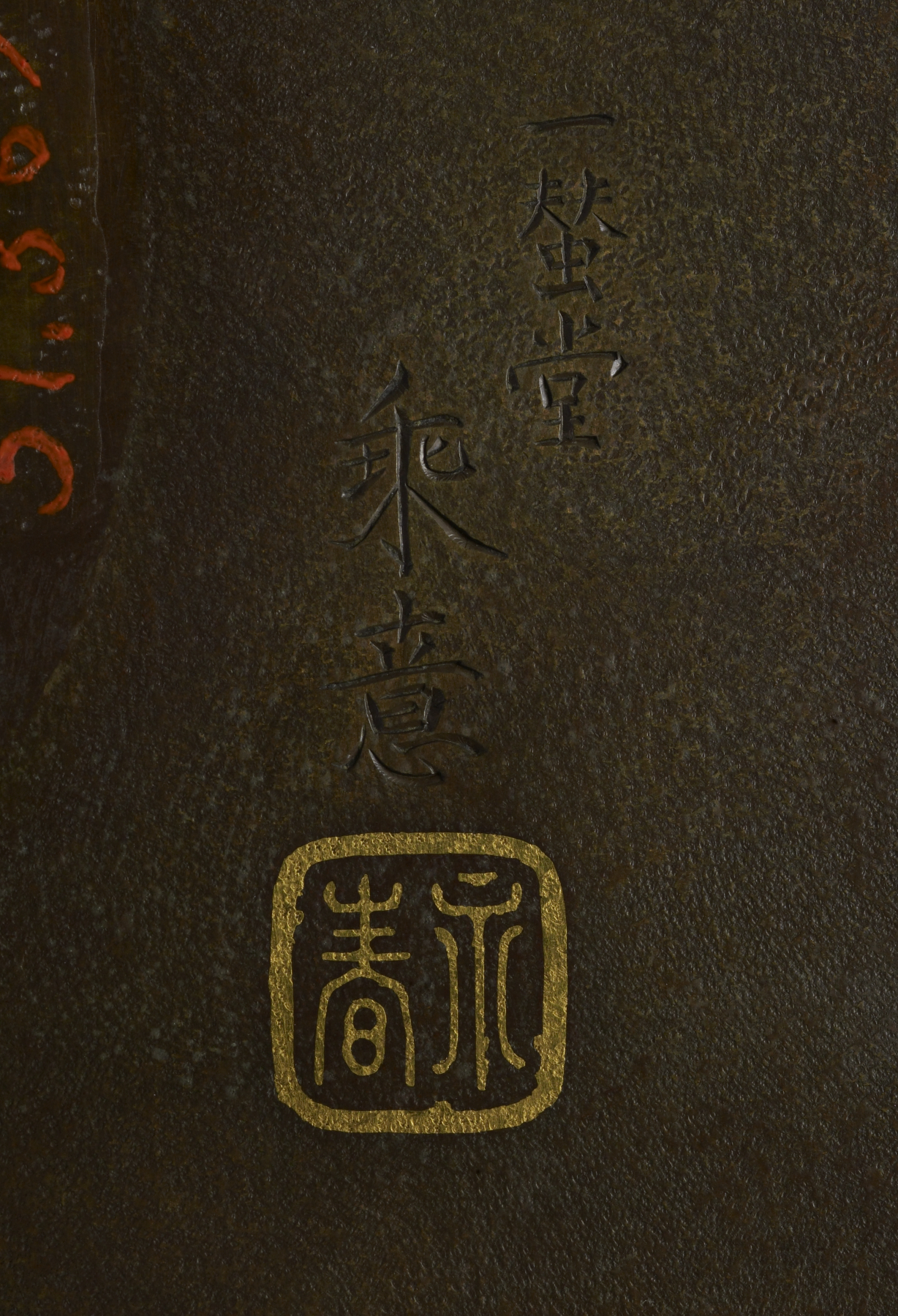Tsuba with the Legendary Chinese ruler Shinnô
(Japanese Military Armor)
The Chinese sage Shinnô (Ch. Shen Nong [Shen Nung]) is on the right side of the tsuba, eating a blade of grass. He has two small horns on his head. Shinnô is credited with inventing the plow and the harp. He also expanded the number of ideograms for the written language from eight to sixty-four. On the reverse is a mountain landscape.
Inscription
Provenance
Provenance (from the French provenir, 'to come from/forth') is the chronology of the ownership, custody, or location of a historical object. Learn more about provenance at the Walters.
Henry Walters, Baltimore [date and mode of acquisition unknown]; Walters Art Museum, 1931, by bequest.
Geographies
Japan, Tokyo (Edo) (Place of Origin)
Measurements
3 1/2 in. (8.9 cm)
Credit Line
Acquired by Henry Walters
Location in Museum
Not on view
Accession Number
In libraries, galleries, museums, and archives, an accession number is a unique identifier assigned to each object in the collection.
In libraries, galleries, museums, and archives, an accession number is a unique identifier assigned to each object in the collection.
51.369






